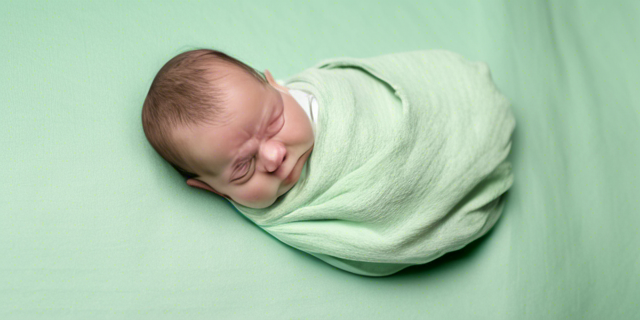You might have heard swaddling instructions that said "swaddle tightly" or "swaddle with 2 fingers wiggling room." The key to remember is that snugness is a highly personal standard when it comes to swaddling, one that is specific to your baby! The two developmental aspects of swaddling snugness are: proprioceptive feedback and Moro reflex.
Snugness Promotes Proprioceptive Feedback
It helps to understand: “Proprioceptive Feedback” is the science for our body's ability to sense its own position and movement. It involves receptors in the muscles, joints, and tendons that provide information to the brain about the body's spatial orientation and movement. This feedback is essential for coordinating and controlling our movements and maintaining balance.
For babies in womb, the pressure from the uterus wall gives them the proprioceptive feedback. However, once they are in the open world, they no longer know the boundaries of their body. The snugness of swaddling gives their body the propriceptive feedback needed to define the boarder of their trunk and limbs, which in time develops into their ability to reach for a toy and not bump into tables while walking.
The personalized pressure on their body from swaddling also offers a sense of boundary and security of the womb. This feeling of physical boundaries provides comfort to babies, which is why you often observe them snuggling up against the edge of the crib. Some of us even continue to crave this sense of boundary in adulthood by finding comfort in weighted blankets.
Snugness Minimizes Moro Reflex Stress
Swaddling snugly can help reduce the stress from activated Moro reflex, a common yet temporary newborn response to sudden stimuli. Moro reflex typically subsides within the first few months as a baby's nervous system develops and their motor control improves.
When the Moro reflex is triggered, the body kicks into the fight-or-flight mode and elevates stress hormones. Motion-wise, baby first extending their limbs, like a starfish, and then jerking them inward, as if hugging or grasping. The unexpected stimuli startles baby and often make baby cry, then exacerbated by the sudden motion of Moro reflex.
Swaddling mitigates the stress from activated Moro reflex by containing the limbs from outward extension. Sometimes you might heard your baby whimper for a second or two, then quickly settle back to sleep. Swaddling more snuggly is particularly effective for infants with a stronger Moro reflex, reducing disruption to their sleep.
As you observe a decrease in the Moro reflex's intensity, consider loosening the swaddle to support self-soothing and encourage your baby to explore their limbs freely.
Snug & Safe
It's important to remember that the goal of smugness is to provide comfort & support for your baby, not to restrict their movement or inhibit development.
Here are some key safety considerations to keep in mind when it comes to swaddling snugness:
- Hip Health: When swaddling, any discussion about snugness applies only to the upper torso. From the hip joints downward, newborns should have the freedom and flexibility to exercise their hips and legs. This helps prevent hip dysplasia, a condition where the hip joint doesn't develop properly.
- Temperature Control / Prevent Overheating: Babies have less reactive internal body temperature calibration mechanism. Ensure that your swaddle doesn't make your baby too warm. Check your baby's neck or back to gauge their comfort. Dress them in layers or nude,
- Roll-Ready: Ensure Arms Are Free When Baby Starts Rolling
Experiment different levels of snugness and observe your baby’s reaction, then adjust accordingly. Personalized Swaddling (P.S.) is about swaddling with a personal touch for your baby, maximizing the benefits of swaddling. Swado is to support you in nurturing your baby's unique path to comfort and growth.




